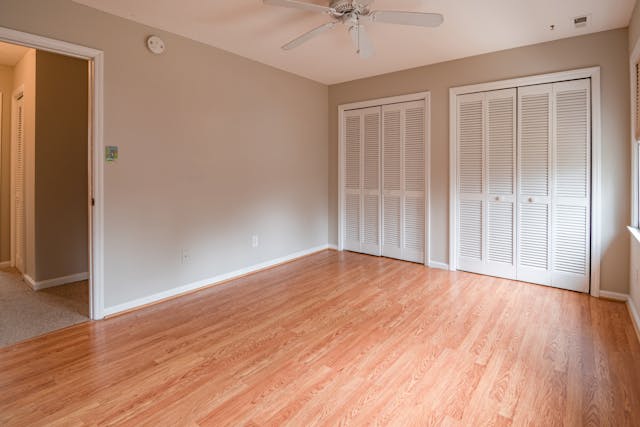Archive for the ‘Property Management Education’ Category
How to Advertise Your Mesa Rental Property Successfully
Due to Mesa’s high quality of life, low cost of living, access to desirable amenities, and warm weather all year round, the city has become incredibly popular among renters. If you’re thinking about investing in the Arizona real estate market, renting out your existing property in Mesa can be a very profitable long-term venture!
By renting out your Mesa home, you can earn a steady passive income while also growing your wealth over the long term. To make building wealth through real estate more tolerable, finding reliable long-term tenants is key. To find long-term tenants for your properties, you must have an effective advertising plan!
In this article, our team will go over the best tips for successfully marketing a rental.
Tips for Advertising Your Rentals in Mesa
In the last few months, with additional rental supply coming into the market, attracting high-quality residents at top rents has become increasingly challenging. With so much competition, it can be difficult to make your Mesa home stand out from the rest.
Luckily, a good advertising strategy can give you a much-needed boost. Here are some things you can do to advertise your Mesa rental successfully:
Address Your Property’s Curb Appeal
Addressing your property’s curb appeal is crucial when trying to rent it. First impressions matter, and a well-maintained exterior can attract more potential tenants. Enhancing curb appeal through landscaping, fresh paint, and clean walkways signals that the property is well-cared for, suggesting a higher quality living experience.

This attention to detail can lead to faster rentals and potentially higher rental income. Additionally, it sets a standard for tenants, encouraging them to maintain the property’s appearance. Ultimately, investing in curb appeal not only boosts tenant interest but also adds value to your property.
Get Your Rental Property Ready
If your Mesa home is untidy or in need of renovations and upgrades, you may have a harder time landing qualified tenants. Before listing your property for rent, you should take the time to make the unit rent-ready by cleaning it thoroughly and conducting an inspection to determine whether any repairs need to be addressed promptly.
Additionally, if you have the time and resources, you should consider giving your property a cosmetic upgrade. Even simple touches such as painting the walls and installing new fixtures can improve your property’s appeal.
Take Quality Photos
Your rental listing should include quality photos of the property and/or a virtual tour. This will allow prospective residents to get a feel for the space and envision themselves living there. High-quality photos capture the property’s best features, highlighting its layout, natural lighting, and unique characteristics.
This transparency builds trust and can significantly increase interest in the listing. By providing a comprehensive visual representation, you attract serious inquiries from individuals who have already developed a connection with the space, ultimately leading to faster and more successful rentals.

Create an Engaging Rental Listing
Nowadays, most renters look for rentals solely online. Creating a digital rental listing is, therefore, one of the best ways to advertise your home for rent. However, your listing should be clear and engaging to make your property stand out from the rest.
Make sure to highlight your quality photos as videos as these will draw in prospects. In the accompanying description include the number of bedrooms and bathrooms, location, amenities, square footage, the unique features of the Mesa property, rent price, and your contact information.
Set A Competitive Price
Once you’ve ensured that your property looks its best both in person and through online advertising, the final step is setting an accurate rent price. Charging too much for your Mesa rental can drive potential tenants away. On the other hand, undercharging can attract unsuitable tenants and limit your cash flow at the end of the month. If you want to attract tenants quickly while ensuring the profitability of your investment, you should set a competitive price.
The best way to do this is by browsing rental listings for similar properties in your neighborhood. You can set fair and competitive rental rates by doing a thorough comparative analysis of local rent prices for properties similar to yours. It would help if you also considered partnering with a property management firm as they’re also well-versed in setting and adjusting accurate prices.

Advertise Your Property Online
Once you’ve drafted your rental listing, you should publish it across several real estate websites. This will allow you to reach a wider audience. Additionally, it’s a good idea to advertise your property on social media, and real estate forums. This will help you maximize the visibility of your listings and reach a wider pool of interested renters more quickly.
Partner with a Property Management Company
Advertising a rental property successfully requires consistent availability to respond to inquiries, update online rental listings, coordinate maintenance and repair work, and conduct showings. A seasoned property management company can help with all of these. Additionally, they can help with screening tenants, collecting rent, and dealing with regular maintenance.
Bottom Line
Renting out a property in Mesa can be an incredibly profitable venture. However, the competitiveness of the rental market can make it incredibly difficult to find reliable tenants. However, if you follow the tips in this blog, you can rent your Mesa home more quickly and effectively!
If you would like help marketing and managing your rentals, reach out to our experts at Mark Brower Properties today! With extensive experience in proactive business management, we have refined our expertise to ensure your property is managed with the highest level of care and professionalism. Contact our experts today to learn more!
Pricing Your Mesa Home to Rent
By renting out your house in Mesa you can earn a passive income and grow your wealth over time. But, first, you must price your Mesa rental appropriately. Determining rental prices can be quite challenging as many, ever-changing aspects influence prices.
To help you, our experts at Mark Brower Properties have written this guide. Keep reading to learn some tips on setting a competitive price for your Mesa rental property and ensure the long-term success of your investment!
Why Pricing Your Mesa Rental Appropriately is Important
How much you charge for rent can either attract or deter tenants. Knowing how to price your Mesa rental appropriately can ensure steady returns on investments. Here are some other benefits of setting a competitive price for your Mesa rental:
Attracting High-Quality Tenants
Tenants who are willing to pay a fair market rate often have stable incomes and good rental histories. These tenants are typically more responsible and respectful of the property, leading to fewer issues during the tenancy. By pricing your property competitively, you create a pool of applicants who are serious about finding a home and are more likely to meet your tenant criteria.
Reduced Vacancy Periods
When your property is priced in line with similar properties in the area, it attracts more interest from potential tenants. This increased interest translates to faster occupancy, reducing the time your property sits vacant.

Maximized Rental Income
Setting a competitive price can maximize your rental income over time. Overpricing your property can lead to longer vacancy periods, which result in lost income. Furthermore, underpricing can mean missing out on potential revenue and in rare cases, financial losses. A competitive price strikes a balance, attracting tenants quickly while ensuring you maximize your income and ROI, helping you maintain a consistent cash flow.
Enhanced Marketability
Potential tenants often look at multiple properties before making a decision, and a well-priced property stands out in their search. Additionally, a competitively priced property is more likely to be featured prominently in rental listings, attracting more views and inquiries. Therefore, enhanced marketability not only speeds up the rental process but also gives you a larger pool of applicants to choose from.
Higher Tenant Retention
Tenants who feel they are paying a fair rent are more likely to stay longer. High tenant retention rates translate into lower turnover and vacancy-related costs, which can add up quickly.
A Step-by-Step Guide to Pricing Your Mesa Home for Rent
If you’ve never owned a rental property before, pricing your Mesa home for rent can be incredibly challenging. Here are some tips to help you:
Assess the Condition of the Property
The overall condition of your property will play a crucial role in its profitability. Before listing your Mesa home for rent, ensure that it’s in good condition. If there are any unaddressed repairs, the value of your property will decrease, meaning that you’ll have to charge less than the current market value.

On the other hand, if your property is in good condition or has been recently renovated, you’ll be able to charge more for rent.
Conduct Thorough Market Research
The location of a rental property is one of the most crucial factors you should consider when pricing it. Properties in sought-after neighborhoods tend to be rented at higher prices. You can determine whether your Mesa home is located in a high-rent neighborhood by conducting some market research. Additionally, checking other rental listings of comparable residential properties in your area can help you set more competitive rates.
Assess Tenant Demand
Researching the current market trends is crucial when pricing your Mesa home for rent. If there’s a high demand for rental accommodations but a limited supply of properties in your area, you will be able to charge more for rent. On the contrary, if many rentals but fewer tenants are looking to move into the area, this may necessitate setting lower prices to avoid dealing with long vacancy periods.
Calculate Your Expenses
Successfully managing a rental property requires not only a big initial investment but also regular expenses. Between mortgage payments, insurance premiums, and maintenance costs, you’ll accrue plenty of expenses. Ideally, you should be able to cover these operational expenses while generating profit with your rental income alone. But this won’t be the case if you underprice your rental property.

Before listing your Mesa home for rent, you should take the time to calculate your potential expenses. Consider your mortgage payments (if applicable), operational costs, and how much you’d like to save for your emergency fund.
Seek Professional Help
The rent price you set for your Mesa rental will greatly affect its profitability. If you’re unsure whether you’re setting a competitive price for your home, consider partnering with a property management firm. With their years of experience, they’ll be able to tell you right away whether your rental price is within the market rate.
Additionally, they can conduct the necessary research to help you price your investment property appropriately. Furthermore, they can help you with screening tenants, marketing your rental, and dealing with property maintenance.
Bottom Line
One of the biggest mistakes you can make as a landlord is not pricing your rental property appropriately. As such, you should assess the condition of your property and the rental demand in your area, conduct market research, and determine your operational expenses. This will help you set a competitive price for your Mesa rental, ensuring the long-term profitability of your investment!
If you need further help pricing and managing your Mesa home for rent, contact Mark Brower Properties! Our team of dedicated property managers is ready to help you.
The Benefits of Renting to Tenants with Pets
As a landlord, deciding whether or not to allow pets in your rentals can be a tough call. Concerns about potential damage, hazards, and additional maintenance are valid. However, the benefits of renting to pet owners can often outweigh the risks.
This post will explore the advantages of adopting a pet-friendly policy in your rental properties and how it can enhance your investment’s profitability.
Perks of Renting to Pet-Owners
Here are some benefits that come with offering a pet-friendly rental property:
Expanding Your Market
The first and perhaps most significant advantage of allowing pets in your rentals is the substantial expansion of your potential tenant pool. A majority of households have pets these days. By embracing this demographic, you open your properties to a wider audience, increasing your chances of finding tenants quickly.
Higher Retention Rates
Tenants with pets, on average, tend to stay longer in a rental unit. Moving with pets is challenging due to the limited number of pet-friendly options available, which means pet owners often prefer to stay put, reducing turnover for you.
Lower turnover rates translate into fewer vacant days and less money spent on advertising, cleaning, and repairs between tenants. Furthermore, the stability of longer tenancy periods allows for better financial planning and less stress associated with tenant screening and lease renewals.

Enhanced Community and Security
Properties with pet-friendly policies often experience a stronger sense of community. Pets can be great ice-breakers, helping neighbors to connect and interact more frequently. This enhanced sense of community can lead to tenants looking out for each other’s properties, indirectly boosting the overall security of the area.
Attracting Responsible Tenants
Pet owners often demonstrate a high amount of responsibility because keeping an animal healthy and happy requires a certain level of routine and dedication. This sense of responsibility can translate into better-maintained living spaces and more diligent renters. By conducting a thorough screening process, including pet interviews or requiring references from previous landlords, you can ensure that you are renting out your property to responsible pet owners.
Encouraging Long-Term Leases
By allowing pets, you can encourage tenants to commit to longer lease terms. Offering a two-year lease agreement, for instance, with a pet clause that benefits both parties, can secure a stable income stream and reduce the hassle associated with frequent tenant turnover. Pet owners often face limited housing options, making them more likely to appreciate and commit to pet-friendly rentals. This not only enhances tenant satisfaction but also fosters a sense of loyalty and stability.
Additionally, long-term leases minimize the time and expenses involved in advertising vacancies, screening new tenants, and preparing the property for new occupants. Overall, pet-friendly policies can be a strategic advantage for property management companies aiming for sustained tenancy and consistent rental income.

The Role of Professional Property Management
While the benefits of renting to tenants with pets are clear, managing a rental property, especially multiple units, can become a complex task. This is where professional property management comes in. Here are several reasons to consider hiring a property manager, especially when you consider renting to pet owners:
Periodic Property Inspections
Period inspections are crucial in maintaining the condition of your real estate investment, especially when pets are involved. Property managers can routinely inspect properties to ensure they are well-maintained, saving you time and preserving the value of your property.
Expert Handling of Tenant Screening
A professional property manager can handle the intricacies of tenant screening, including checking for responsible pet ownership. They have the experience and resources to conduct thorough background checks and ensure that both the tenant and the pet are a good fit for your property.
Effective Communication
Property managers can serve as the point of contact for your tenants, handling day-to-day issues. They’ll ensure that tenant queries are handled efficiently on your behalf, which is key to tenant satisfaction and retention.
Handling Legal Compliance
From pet policies to security deposit handling and eviction management, professional managers are well-versed in local laws and regulations, ensuring that your rental properties are compliant and that you are protected from potential legal issues.

Maintenance and Repair Coordination
Property managers play a crucial role in maintaining the quality and value of your property. They are responsible for coordinating both routine and emergency maintenance, ensuring that issues are addressed promptly and professionally. This not only helps to keep the property in optimal condition but also aids in keeping tenants happy, which can lead to longer tenancy periods.
Marketing and Advertising Expertise
A professional property manager understands market trends and can effectively advertise your property on the right platforms to ensure maximum visibility. This capability is particularly crucial in attracting pet owners in Arizona, as it involves highlighting pet-friendly amenities and policies that are most appealing to this demographic.
Bottom Line
Allowing tenants with pets can significantly benefit landlords by expanding the market, increasing revenue, and reducing turnover rates. However, managing a rental property, particularly one that is pet-friendly, requires diligence and expertise. Hiring a professional property manager, like Mark Brower Properties, can help ensure that your property is profitable and well-maintained.
Our Mesa property management company has designed a process that prevents minor issues from escalating into major problems. Additionally, we consider the big picture by evaluating your goals, the performance of the market and your assets, and your overall returns. Contact us today to learn more!
Tips for Getting Your Property Ready to Rent
As a landlord, preparing your property for rent is a crucial step to ensure a steady income and a positive experience for both you and your tenants. A well-prepared rental property attracts high-quality tenants, reduces vacancy periods, and minimizes maintenance issues down the line. Here are some comprehensive tips that our team at Mark Brower Properties has compiled to get your property ready for rent:
Perform a Thorough Cleaning
A clean property sets the tone for how tenants will treat it. Make sure to:
- Steam clean carpets
- Polish hard floors
- Clean windows inside and out
- Scrub all surfaces in the kitchen, including appliances, counters, and cupboards
- Ensure all bathroom fixtures are sparkling and mold-free
- Dust and wash walls and ceilings to remove cobwebs and stains
We strongly recommend hiring a professional cleaning service to ensure everything is spotless. This could also save you time, especially if you have multiple investment properties to attend to. What’s more, professionals will be better able to spot small issues that owners and residents may have become accustomed to, ultimately ensuring a more thorough cleaning.
Make Necessary Repairs
Before listing your property, walk through it as if you were a prospective tenant. Note any issues that need fixing, such as plumbing leaks, electrical problems, and HVAC systems. Check faucets, toilets, and pipes for leaks, test all outlets, switches, and light fixtures, and ensure heating and cooling systems are functioning efficiently.
Next repair any doors and windows that are sticking, squeaky, or have broken locks, and make sure all appliances are in working order and replace if necessary. Prompt repairs demonstrate your commitment to maintaining the property and preventing future disputes with tenants.

If you’d like help with this, Mark Brower Properties provides an onboarding checklist. Our process with produce a detailed report that emphasizes what still needs to be done to get the property ready, and our professional recommendations to achieve maximum rent and high-caliber tenants.
Enhance Curb Appeal
The exterior of your property is the first thing potential tenants see. Invest time and effort in mowing the lawn, trimming bushes, and planting flowers. Power wash siding, walkways, and driveways, and repaint if the exterior looks worn or outdated. Consider installing outdoor lighting for safety and aesthetics. A well-maintained exterior makes your property more attractive and can justify a higher rent.
Update Fixtures and Appliances
Modern fixtures and appliances can make your property more appealing. As such replace outdated or broken light fixtures with modern, energy-efficient options. Invest in stainless steel or other modern finishes for kitchen appliances if your budget allows. Consider upgrading bathroom faucets, showerheads, and toilets for a fresh look. These updates can significantly enhance the property’s appeal without a major renovation.
Paint and Decorate Neutrally
A fresh coat of paint in neutral colors can make a big difference. Neutral tones are universally appealing and allow tenants to visualize their belongings in the space. As such, stick to colors like beige, gray, or white, and avoid bold or unusual colors.
Ensure Safety and Compliance
Make sure your property complies with local regulations and safety standards. Install and test smoke and carbon monoxide detectors regularly and ensure that all doors and windows have secure locks. Then verify that handrails and stairs are sturdy and meet code requirements and ensure wiring and outlets are up to code. Compliance with safety regulations not only protects tenants but also reduces your liability as a landlord.

Set Competitive Rent
Research the local market to determine a competitive rent price. Look at similar properties in the area and consider factors such as location, size, and amenities. Setting the right rent attracts tenants quickly and reduces vacancy periods.
Prepare a Comprehensive Lease Agreement
A well-drafted lease agreement protects both you and your tenants. Ensure it includes rent details such as amount, due date, and payment methods, security deposit information including amount and conditions for return, maintenance responsibilities outlining who is responsible for what, and rules and policies such as pet policies and smoking rules.
Create a Detailed Listing
A well-crafted listing is essential for attracting potential tenants. Include high-quality photos showing each room, the exterior, and any unique features, and write a detailed description highlighting the property’s best attributes. Don’t forget to clearly state the rent price, lease duration, and any policies. A thorough and appealing listing helps you stand out in a competitive rental market.
Screen Tenants Carefully
Finding the right tenants is crucial for a positive rental experience. Implement a thorough screening process that includes background checks, verifying past evictions, conducting credit checks, and assessing financial responsibility. A careful screening process helps ensure you find reliable and responsible tenants.

Conduct a Move-In Inspection
Before tenants move in, record a detailed pre-move-in inspection of the property and shake it with the resident. This documentation is crucial for preventing and resolving any disputes over the security deposit at the end of the lease.
Establish Clear Communication Channels
Open and clear communication with your tenants fosters a positive relationship. Provide multiple ways for tenants to contact you and respond promptly to inquiries and maintenance requests. Regularly check in to address any concerns and ensure the property is being maintained.
Plan for Ongoing Maintenance
Regular maintenance keeps your property in good condition and prevents major issues. Develop a maintenance schedule for tasks such as HVAC servicing twice a year, pest control quarterly or as needed, regular lawn care with mowing and trimming, and annual or biannual gutter cleaning. Planning for ongoing maintenance helps you stay ahead of potential problems and keeps your tenants satisfied.
Bottom Line
Getting your property ready to rent involves a mix of preparation, maintenance, and strategic updates. By investing time and effort upfront, you can attract quality tenants, reduce vacancy periods, and ensure a smooth rental experience. Follow these tips to set your property apart and create a welcoming home for your future tenants.
That said, owning and managing a rental property isn’t for everyone. To make the process easier and maximize your return on investment, work with a trusted property management company. If you need help, contact Mark Brower Properties, and our expert property managers would be happy to assist you!
How to Rent Out Your House in Mesa, AZ
Have you ever wondered how to navigate the process of renting out your house in Mesa? With its vibrant community and growing demand for rental properties, Mesa offers a promising market for landlords. Whether you’re a first-time landlord or looking to optimize your rental strategy, understanding the local landscape and best practices can make all the difference.
From finding reliable tenants to understanding legal requirements, this guide aims to equip you with the knowledge to succeed in the Mesa rental market. Here’s a list of what landlords need to know to rent out their property in Mesa:
Legal Requirements
Understanding rental laws is crucial for landlords in Mesa, AZ. Familiarize yourself with local landlord-tenant laws, which govern various aspects of renting, including lease agreements, security deposits, and eviction procedures. Landlords must comply with specific federal, state, and local regulations to ensure a lawful and smooth rental process.
For example, landlords must provide habitable living conditions, maintain the property in good repair, and give tenants proper notice before entering the premises. It’s also important to know the rights and responsibilities of landlords and tenants under Arizona law to avoid legal issues.

Property Preparation
The condition of the property, when a tenant moves, makes a larger impact than any lease or conversation can. As such before listing your property for rent, ensure it’s in optimal condition. Start by making necessary repairs and improvements to ensure the property is safe and habitable. This includes fixing plumbing issues, repairing appliances, and addressing any structural problems.
You should also enhance curb appeal by maintaining the landscaping and ensuring the exterior of the property looks inviting can also make a significant difference. After all, a well-prepared and maintained property sets a standard for the rest of the tenancy of protects cash flow for owners.
If you need help, consider working with our experts at Mark Browner Properties. Our rent-ready inspection process allows us to send out one of our field specialists to perform a free 100+ point inspection of the property. This process ensures that the rental meets our high standards.
Tenant Screening
Tenant screening is a critical step to ensure you find reliable tenants who will care for your property and pay rent on time. Begin by conducting background checks to verify potential tenants’ credit, employment, and rental history. This helps assess their financial stability and past rental behavior.
Additionally, verifying their employment and income ensures that they can afford the rent. Contact previous landlords to inquire about their reliability as tenants. Consistently applying these screening criteria helps mitigate the risk of renting to tenants who may not meet their obligations.
Lease Agreement
Drafting a clear and comprehensive lease agreement is essential to protect both you and your tenants. The lease should include important details such as the rental amount, lease duration, and any rules or restrictions regarding the property.

You should also outline procedures for rent payments, late fees, and security deposits. Include provisions for any additional fees or charges, such as pet deposits or parking fees. Finally, ensure the lease complies with Arizona landlord-tenant laws and is fair and transparent to both parties. Consider consulting with a real estate attorney to ensure your lease agreement is legally sound and covers all necessary aspects.
Maintenance and Repairs
Establishing clear procedures for handling maintenance and repairs is crucial for maintaining tenant satisfaction and protecting the condition of your property. Respond promptly to maintenance requests to address issues as they arise, which can help prevent minor problems from escalating into larger ones.
Conduct regular inspections of the property to identify any maintenance needs and ensure the property is being properly cared for by tenants. Communicate to tenants their responsibilities for minor maintenance tasks, such as changing light bulbs or replacing air filters. Document all maintenance and repair requests and keep thorough records of any work performed on the property.
Security Deposits
Security deposits play a crucial role in protecting your property against potential damages caused by tenants. In Arizona, there are specific regulations regarding security deposits that landlords must follow. You can typically charge up to one and a half month’s rent as a security deposit.

Ensure you document the condition of the property thoroughly with a move-in inspection report and take photos to document any existing damage. Provide tenants with an itemized list of any deductions from the security deposit after they move out, per Arizona law. Remember to return the security deposit within the appropriate timeframe if no deductions are needed.
Tenant Relations
Building positive relationships with your tenants is essential for a successful rental experience. Communicate clearly and promptly with your tenants, whether it’s regarding rent payments, maintenance requests, or general inquiries. Respect your tenants’ privacy rights and provide notice before entering the property, except in emergencies.
Address any concerns or issues raised by tenants in a timely and professional manner to maintain their satisfaction. Being proactive in resolving conflicts or disputes can help prevent escalation and foster a positive landlord-tenant relationship. By treating your tenants with respect and consideration, they’ll be more likely to treat your property with the same care.
Tax Considerations
Understanding the tax implications of rental income is crucial for landlords in Mesa, Arizona. Rental income is generally taxable, so you’ll need to report it on your federal and state income tax returns.
The Transaction Privilege Tax (TPT) also requires a landlord to make sure they have a license for the city their property is in and that they collect and pay a monthly TPT to the Arizona Department of Revenue. Property owners should note that a law was recently passed that will sunset the requirement to collect and pay this tax by the end of the year.

Keep detailed records of rental income and expenses, including maintenance costs, property taxes, insurance premiums, and depreciation as many expenses related to managing and maintaining your rental property can be deducted from your rental income, reducing your taxable income. Consult with a tax professional or accountant who specializes in rental properties to ensure you are maximizing your tax deductions and complying with IRS regulations.
Bottom Line
For expert guidance in navigating Mesa’s rental market, trust Mark Brower Properties. Our team can assist with legal compliance, tenant screening, and property maintenance, ensuring a smooth and successful rental experience. Let us help you maximize your rental income and minimize your stress. Contact Mark Brower Properties today to learn more about our comprehensive property management services!
Arizona Fair Housing Act: An Overview
The Fair Housing Act (FHA) protects renters from discrimination and understanding its specific elements can assist you in effective property ownership and management. Arizona upholds the right to fair housing through the Fair Housing Act (FHA). This federal law prohibits discrimination in housing based on race, color, national origin, religion, sex, disability, and familial status. It applies to renting, buying, and securing financing for housing.
The Arizona Department of Housing (ADH) and the U.S. Department of Housing and Urban Development (HUD) work together to enforce the FHA in Arizona. This ensures everyone has an equal opportunity to find a place to live.
This guide will break down the Fair Housing Act in Arizona, explaining what it covers and how it can help you make informed decisions about your rentals.
What Type of Discrimination Does The Fair Housing Act Prohibit?
As a landlord in Arizona, providing fair and equal housing opportunities is required under the landlord-tenant laws. The Fair Housing Act protects individuals from discrimination based on several protected classes. Here’s a detailed explanation of each class to ensure your rental practices are compliant with federal and state laws:
Race and Color
Rejecting someone solely because of their race or skin tone is a clear violation. The Fair Housing Act prohibits any decisions or treatment of tenants based on race, including ethnicity or national origin that might be perceived through someone’s name.

Gender
The Fair Housing Act ensures individuals, regardless of gender identity or sex, have equal access to housing. This means avoiding language like “suitable for a single man” in advertisements and rejecting applicants based on outdated gender stereotypes about income or responsibility.
National Origin
A qualified applicant from another country deserves the same consideration as a resident. The Fair Housing Act prohibits discrimination based on nationality or ancestry. This means avoiding assumptions based on where someone comes from. Setting different security deposits or rental terms based on national origin is also illegal.
Religion
Respecting a potential tenant’s religious beliefs is essential. Refusing someone because they observe religious holidays differently or require reasonable accommodations is a violation.
Familial Status
Families with children under 18 are a protected class. Denying housing because a potential tenant has children, imposing age restrictions, or requiring excessive security deposits from families are all violations. The Fair Housing Act protects pregnant women as well.
What is Prohibited Under The Fair Housing Act
The Fair Housing Act prohibits discrimination based on race, color, sex, disability, national origin, religion, or family status. This means avoiding actions like:
- Refusing Rentals or Showings: Every qualified applicant deserves a chance, regardless of background.
- Setting Different Terms: Security deposits and rent should be based on qualifications, not protected characteristics.
- Making Misleading Statements: Don’t falsely claim a property is unavailable.
- Discriminatory Advertising: Focus on discussing the features of your rental, not who you want to live there.

- Denying Services or Access: Everyone deserves equal enjoyment of the property and its amenities.
- Steering Tenants: Let qualified applicants choose their living situation.
- Unequal Loan Terms: Financial opportunities shouldn’t be impacted by protected characteristics.
- Refusing Reasonable Accommodations: Work with tenants who need modifications or assistive devices.
- Retaliation: Respecting complaints is key to fostering a positive landlord-tenant relationship.
By understanding the Arizona Fair Housing guidelines, you can create a fair and welcoming environment for potential tenants. This not only upholds the law but also helps you find responsible renters who will appreciate your property.
Renting to Tenants with Disabilities in Arizona
Here are some important things landlords should keep in mind about the Arizona Fair Housing Laws for tenants with disabilities:
Reasonable Modifications
Tenants with disabilities have the right to request reasonable modifications to their units or common areas to make them accessible and livable. This could include installing grab bars, widening doorways, or lowering countertops. The tenant is generally responsible for paying for the modifications themselves. However, you can ask them to restore the unit to its original condition when they move out, but only if it’s reasonable.
Prior Approval Needed
Don’t automatically deny a modification request. Evaluate each request on a case-by-case basis and consider if it’s truly “reasonable.” The modification shouldn’t fundamentally alter the property or create an undue burden on you.

Open Communication
Maintain clear communication with your tenant. Discuss their needs and explore potential solutions together. There may be creative ways to achieve accessibility without extensive modifications.
Service Animals vs. Pets
Service animals are always allowed, even if you have a no-pet policy. You cannot charge a pet deposit or fee for a service animal. However, you can ask for documentation verifying the animal’s service role.
Bottom Line
The Fair Housing Act empowers you to create a welcoming environment for a wider pool of qualified tenants. By understanding your responsibilities and fostering open communication, you can ensure a smooth rental process for everyone.
Managing rentals can be rewarding, but it also requires time and dedication. If navigating fair housing regulations or tenant communication feels overwhelming, consider partnering with a trusted property management company.
Mark Brower Properties offers comprehensive property management services in Arizona, ensuring legal compliance and taking care of day-to-day tasks. Let us handle the legalities while you focus on the joys of being a landlord. Contact us today and experience the peace of mind that comes with expert property management!
Disclaimer: Please note that the information provided in this blog is intended for general guidance and should not be considered as a replacement for professional legal advice. It is important to be aware that laws pertaining to property management may change, rendering this information outdated by the time you read it.
Reasons to Invest in Mesa Real Estate
Mesa, Arizona, is rapidly growing and becoming one of the most desirable places to live in the United States. With a population of nearly half a million, Mesa has become one of the largest cities in Arizona and continues to attract new residents every year.
There are many reasons why investing in Mesa, AZ, real estate can be an intelligent decision. Here are some key factors that make this city a top choice for local and out-of-state real estate investors alike:
Growth and Development in Mesa
Mesa’s economic landscape is experiencing a significant upswing, characterized by robust growth trends and substantial developments across various sectors. The city has witnessed a flurry of recent projects, ranging from commercial expansions to residential developments, which underscore its burgeoning potential as a real estate investment haven.
These developments are not merely enhancing the aesthetic and utility of the city but also significantly boosting property values. In addition to this, they contribute to the overall business growth within the area, attracting investors, residents, and entrepreneurs looking for new ground for their ventures. This positive trend is expected to continue, making Mesa an even more attractive destination for investment and development shortly.
Strategic Location and Connectivity
Mesa’s geographical position offers significant advantages for both real estate investors and residents. The city boasts a comprehensive transportation network, facilitating easy access to and from major Arizona cities. These infrastructure improvements and Mesa’s strategic location present a beneficial scenario for investors aiming to capitalize on connectivity and accessibility.

Booming Real Estate Market
Mesa’s real estate market is experiencing a significant boom, with residential and commercial properties demonstrating strong and promising trends. The latest data on market conditions indicate a growing demand among buyers and investors, underscoring that now is an exceptionally opportune time to consider investment in Mesa’s property sector.
However, future predictions remain overwhelmingly optimistic, further evidencing the enduring appeal of Mesa as a highly sought-after investment destination. This ongoing interest is attributed to Mesa’s robust economic growth, favorable climate, and strategic location, collectively contributing to its status as a compelling location for living and investing.
Business-Friendly Environment
Mesa actively nurtures a pro-business environment, clearly demonstrated by a wide range of initiatives designed to bolster businesses of all sizes. These initiatives encompass attractive tax incentives and substantial grants strategically aimed at fueling business growth and fostering a culture of success.
The result of these efforts is a rich tapestry of success stories that have emerged from Mesa, firmly establishing the city as a dynamic and vibrant hub for business activity. This is especially true across booming sectors. Mesa’s pro-business stance has catalyzed innovation and expansion, making it a beacon for entrepreneurs and established companies seeking to leverage the opportunities presented by the city’s supportive ecosystem.

Quality of Life and Workforce
Mesa is a great place to invest and live. The city offers a high quality of life, attracting potential residents and employees. The local workforce is skilled and educated, backed by local institutions that foster these attributes.
This makes Mesa an ideal place for businesses looking for a talented pool of individuals. Moreover, the city’s lower cost of living and abundance of recreational activities make it a desirable location for residents of all ages.
Educational Excellence
Mesa stands out for its commitment to providing quality education, from elementary to higher education institutions. Mesa, AZ has various schools with high academic standards, comprehensive curriculums, and innovative teaching methodologies.
In addition to its public and private K-12 schools, the area also hosts campuses for several higher education institutions, offering a range of undergraduate, graduate, and professional programs. These institutions contribute to the local workforce’s skill set and engage in research and development activities that benefit the wider community.
Tourism and Recreational Opportunities
Tourism plays a vital role in Mesa’s economic development, which is significantly boosted by its wide range of attractions and leisure activities. From picturesque landscapes to cultural museums, these features enrich the community’s fabric, adding vibrancy and diversity. Moreover, Mesa’s status as an attractive destination for living, working, and visiting is not just a matter of natural beauty and recreational options but also about the welcoming atmosphere and the opportunity it presents for business growth and investment.

This combination of factors enhances Mesa’s appeal to potential investors and positions it as a premier location for tourists and new residents, contributing to the city’s ongoing prosperity and growth.
Financial Incentives and Support for Investors
Mesa offers a range of financial incentives to attract investments. Potential investors can access various resources to benefit their ventures, including personalized advice from the Mesa Economic Development Department. These incentives have already yielded positive outcomes for many businesses and continue attracting investor interest.
Bottom Line
Mesa represents a burgeoning market brimming with opportunities for investors. Its remarkable growth, advantageous location, thriving real estate, business-friendly environment, quality workforce, vibrant tourism sector, and attractive financial incentives make it an ideal investment destination. We encourage those looking to diversify their portfolios to consider Mesa as a prime location for their next real estate investment venture.
Have you decided to invest in Mesa, AZ’s flourishing real estate market? Partner with Mark Brower Properties to navigate the opportunities in this dynamic city! Whether you’re interested in residential or commercial properties, our expertise and local knowledge will guide you toward a successful investment. Contact us today to start your journey into Mesa’s thriving real estate market!
Best Areas to Invest in Mesa Arizona and Surrounding Areas
Are you looking to invest in the Arizona real estate market? Mesa is a great option! Its residents can enjoy a high quality of life thanks to a low cost of living, quality education with over ten colleges and universities in the city, plenty of amenities, and warm and sunny weather all year round.
Moreover, Mesa has a prime location in the East Valley of the Phoenix metropolitan area. It’s bordered by major cities such as Tempe, Chandler, and Gilbert, as well as the Salt River Pima–Maricopa Indian Community.
With a strong local economy, Mesa is one of the fastest-growing cities in Arizona. As the city continues to expand, so will the need for rental accommodations in the area. So, there’s no better time to invest in the Mesa real estate market!
We at Mark Brower Properties want you to make smart investments. That’s why we’ve put together this comprehensive guide on the top areas in Mesa to invest in.
Best Mesa Neighborhoods to Invest in Real Estate
Buying an investment property in Mesa, Arizona, can be an incredibly lucrative venture. However, there are many important factors you must consider, including the location of the property, the local rental market, and rental rates. To make things easier for you, here are some of the best neighborhoods in Mesa to invest in:

Red Mountain Ranch
Located in northeast Mesa, Red Mountain Ranch is a master-planned community with over 800 acres. Due to its convenient location near the Red Mountain Freeway, residents can enjoy unique scenic views of the majestic Red Mountain.
Red Mountain Ranch is extremely popular given that the neighborhood is part of a top-rated school district. In addition to great education, this neighborhood offers its residents a quiet life and plenty of incredible amenities, including parks, golf courses, and areas for hiking, biking, and even horseback riding.
Eastmark
Located in the heart of Mesa, Eastmark is a primarily residential community with award-winning schools, beautiful homes, and next-level amenities. Thanks to its high quality of life Eastmark has become the best-selling Master Planned Community in the state of Arizona!
Investing in a rental property in Eastmark is perfect if you want to rent out your home. This master-planned community is home to top-rated schools such as Eastmark High School and BASIS Mesa. Moreover, it’s filled with parks, exercise amenities, playgrounds, as well as local shops and restaurants. This friendly neighborhood has everything residents could ever need, so you can rest assured that your renters will want to stay for the long term.
Dobson Ranch
Dobson Ranch is one of the most sought-after neighborhoods in the state of Arizona. After all, this master-planned community offers its residents a quiet lifestyle and plenty of amenities, such as community centers, parks, trails, and exercise facilities.

One reason why people move to Dobson Ranch is for its quality education. This neighborhood is home to top-rated schools, such as Rhodes Junior High School and Dobson High School. In addition to this, Dobson Ranch is only a short drive away from higher education institutions such as Mesa Community College and Arizona State University.
Dobson Ranch is one of the largest master-planned communities in Arizona. Real estate investors have a wide variety of properties to choose from, including single-family homes, townhouses, and condominiums. This means investors have several properties as well as a diverse tenant population to choose from.
Alta Mesa
Located in central northeast Mesa, Alta Mesa is a small but bustling neighborhood. Local amenities and popular attractions include parks, trails, local shops, tennis courts, and the Alta Mesa Golf Club. With a tight-knit community, Alta Mesa is a popular neighborhood among a diverse range of tenant demographics.
Phoenix
As the capital of Arizona, it’s no wonder why Phoenix is one of the most popular areas to live in Maricopa County. The Valley of the Sun doesn’t only offer its residents great weather and amazing views, but also a high quality of life. After all, Phoenix is home to plenty of parks, malls, recreational amenities, hotel resorts, luxury dining locations, championship golf courses, and one-of-a-kind natural areas.

Moreover, Phoenix is a cultural hub. Some of the most popular attractions in this city include the Phoenix Zoo, the Phoenix Art Museum, the Desert Botanical Garden, the Musical Instrument Museum, and the Footprint Center. With something for everyone, it’s no wonder why Phoenix is so popular among all demographics.
Tempe
If you want to invest in Maricopa County but aren’t sure Mesa is the right choice for you, you should consider investing in the Tempe real estate market. This city is best known for being the home of Arizona State University, one of the top-ranking universities in the country.
The city of Tempe has everything residents might need, from parks to a variety of coffee shops restaurants, and shopping malls. Moreover, Tempe is home to the LEGOLAND Discovery Center and the Tempe Festival of the Arts, which attract thousands of visitors every year. This is ideal if you want to invest in a vacation or long-term rental!
In a Nutshell: Best Real Estate Markets in Mesa, Arizona
As one of the largest and fastest-growing cities in Arizona, Mesa is a great place to invest in real estate. The city’s strong local economy, growing job market, and great amenities make it a sought-after destination for many renters.
If you’re thinking of buying a rental property in Mesa, you should consider neighborhoods such as Red Mountain Ranch, Eastmark, Dobson Ranch, and Alta Mesa. You can also find great investment opportunities in surrounding areas such as Phoenix and Tempe!
Are you ready to invest in the Arizona real estate market? Contact Mark Brower Properties today! Our team of dedicated property managers will be happy to help you find the perfect property for your investment goals.